Like we she was there
Like we she was there
Shot on my first roll of film, this series reimagines my late aunt’s gaze at my brother’s wedding—an attempt to stand where she might’ve stood and see the day through her eyes. The red burns on the film remind me of sunlight through closed eyelids—a presence felt, not seen. Like in Hinduism, where we believe we’ll reunite with loved ones after death, but until then, we carry them with us—in light, in memory, in the quiet between moments.
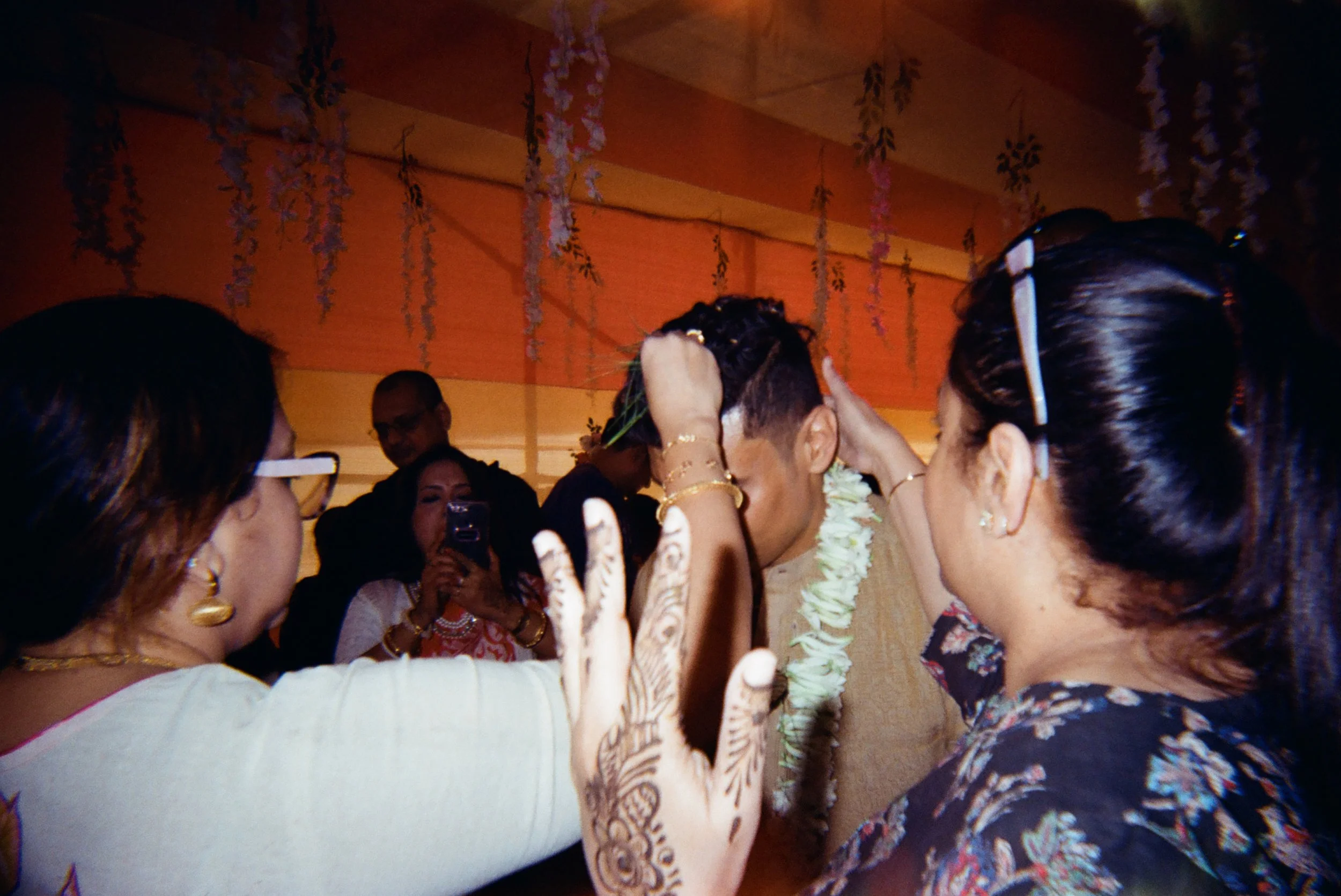
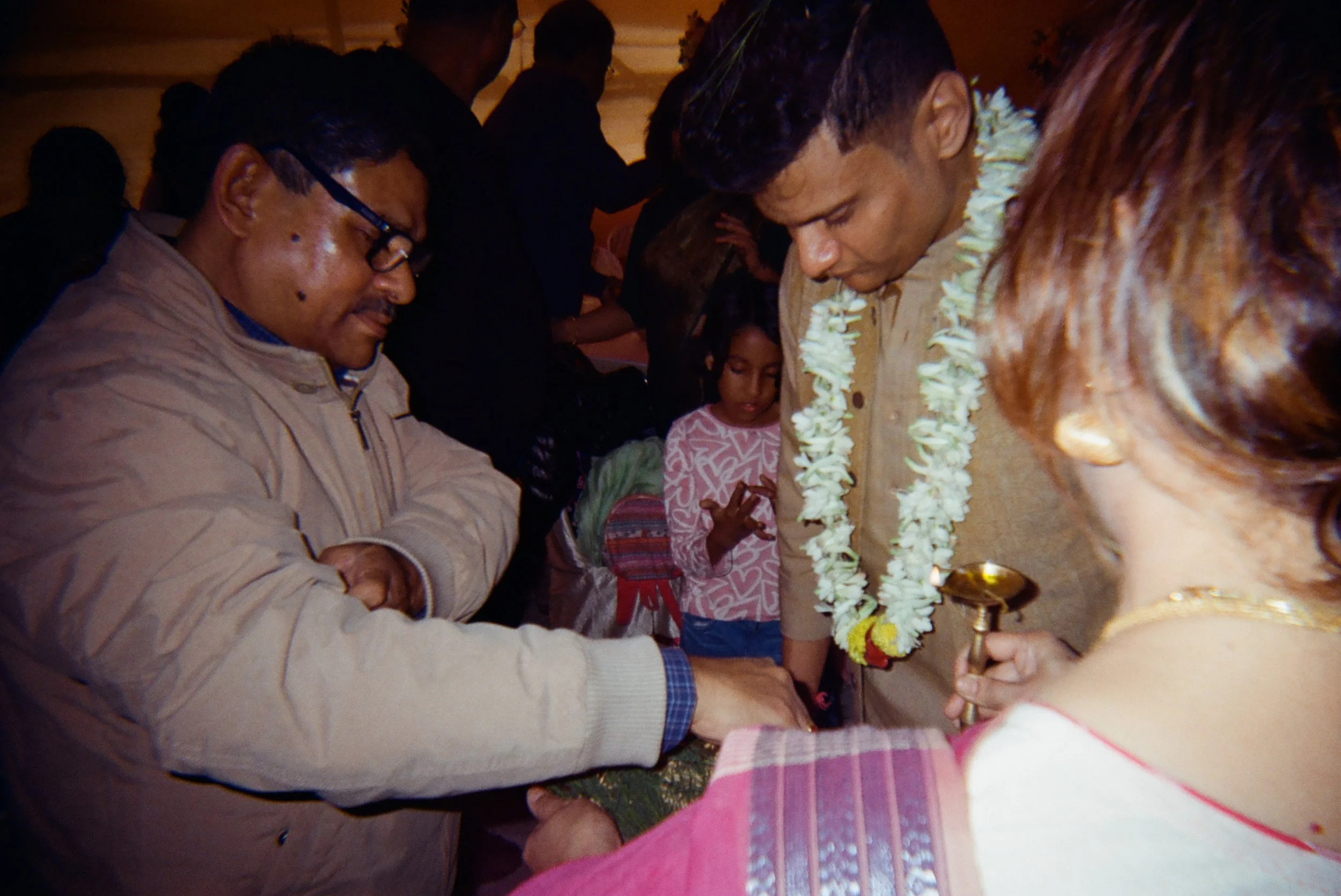
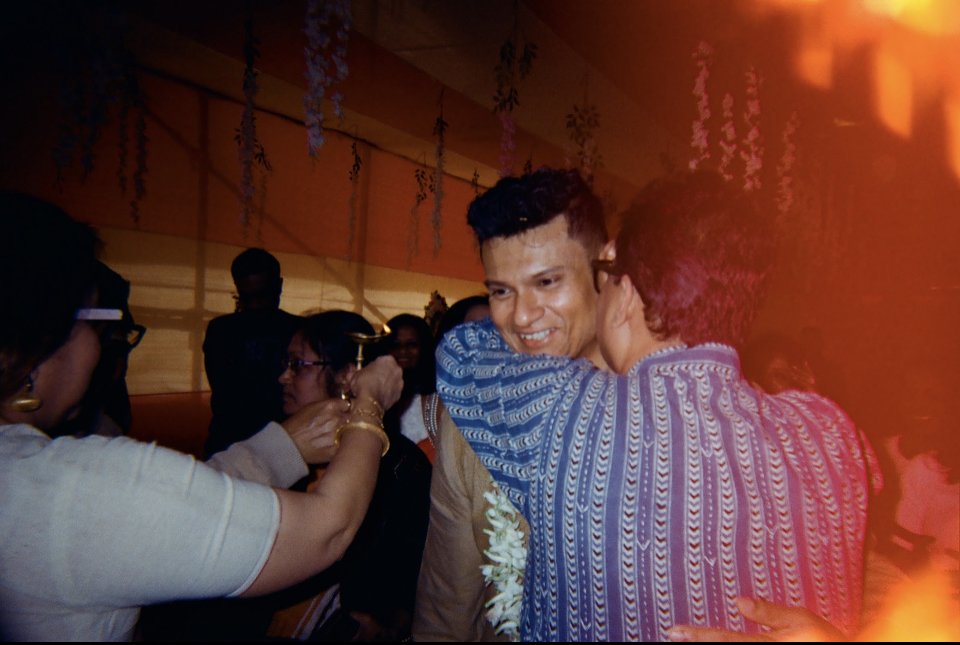

Aiburobhat, the final feast a bachelor enjoys, surrounded by the warmth and blessings of family elders. If she were there, witnessing the joy, she would be overjoyed to see all the people she cherished deeply showering her son with blessings before his marriage.

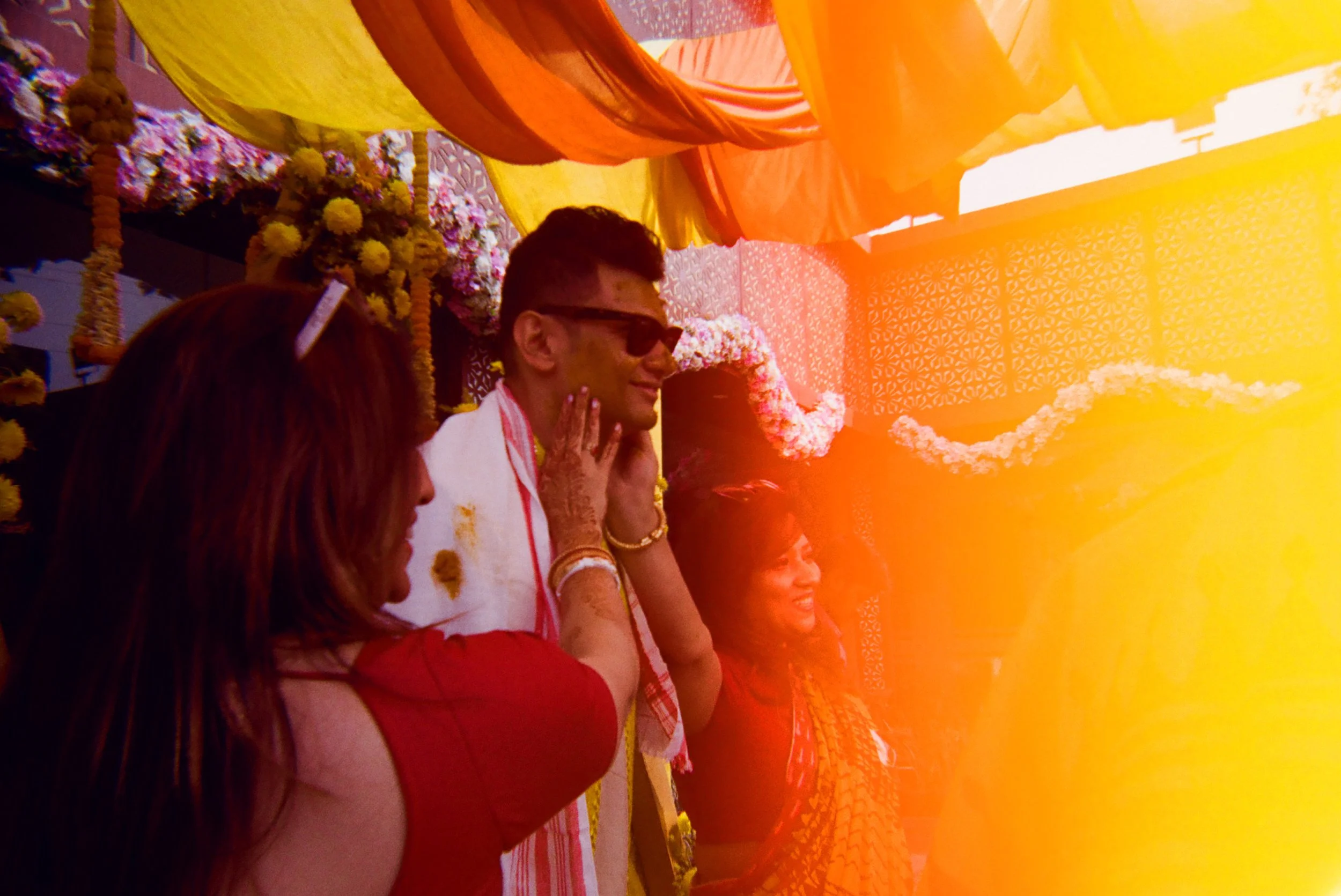
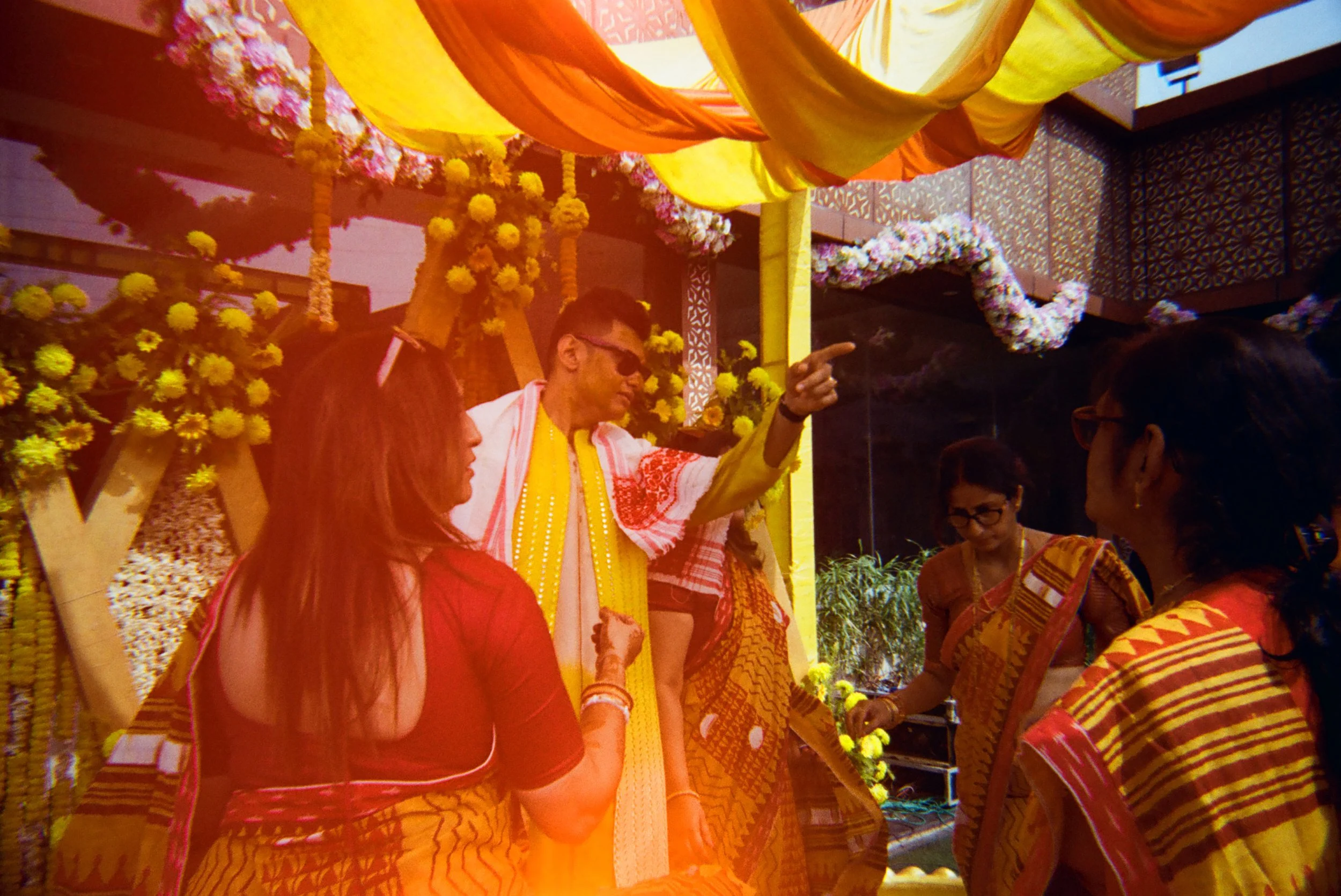
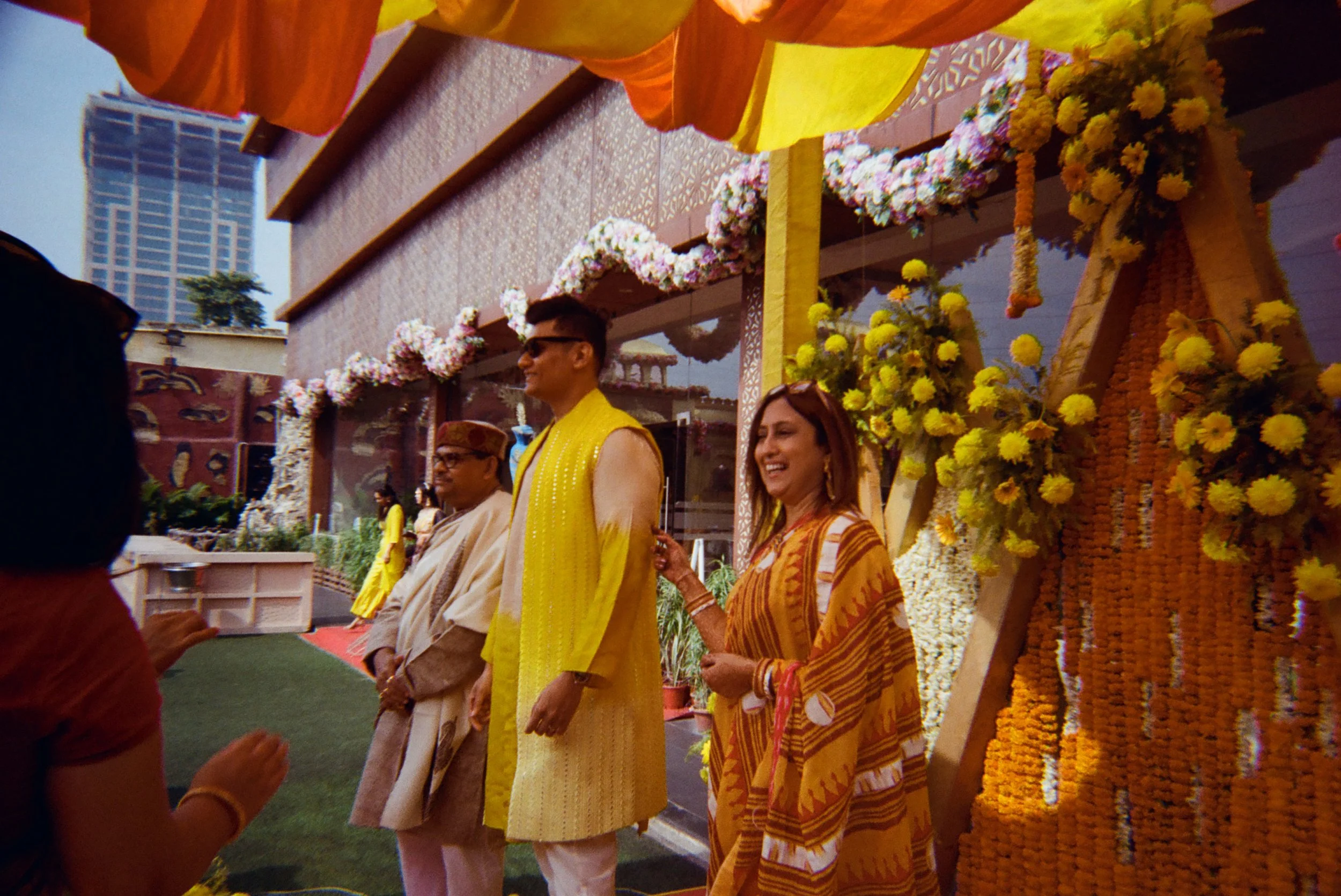
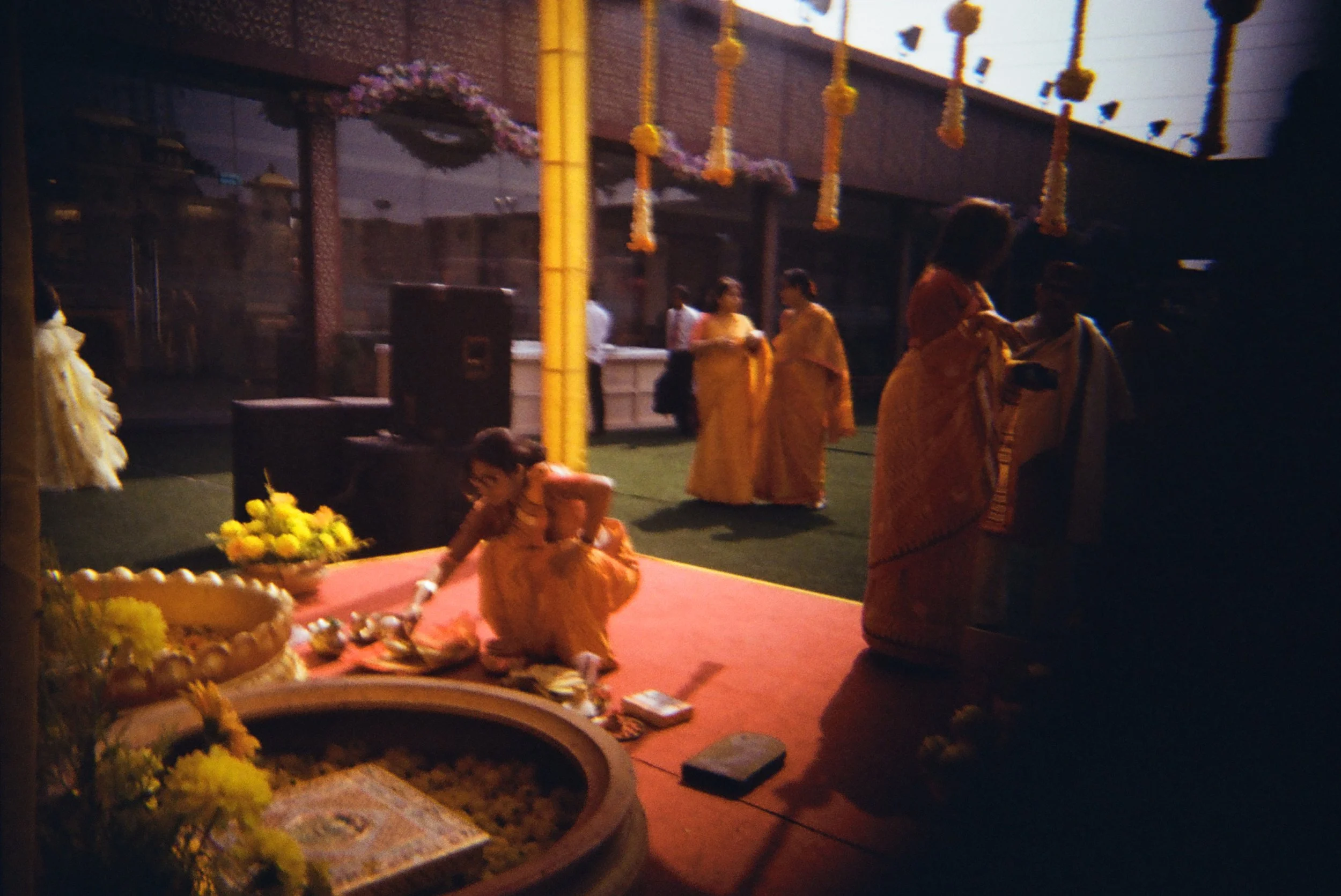
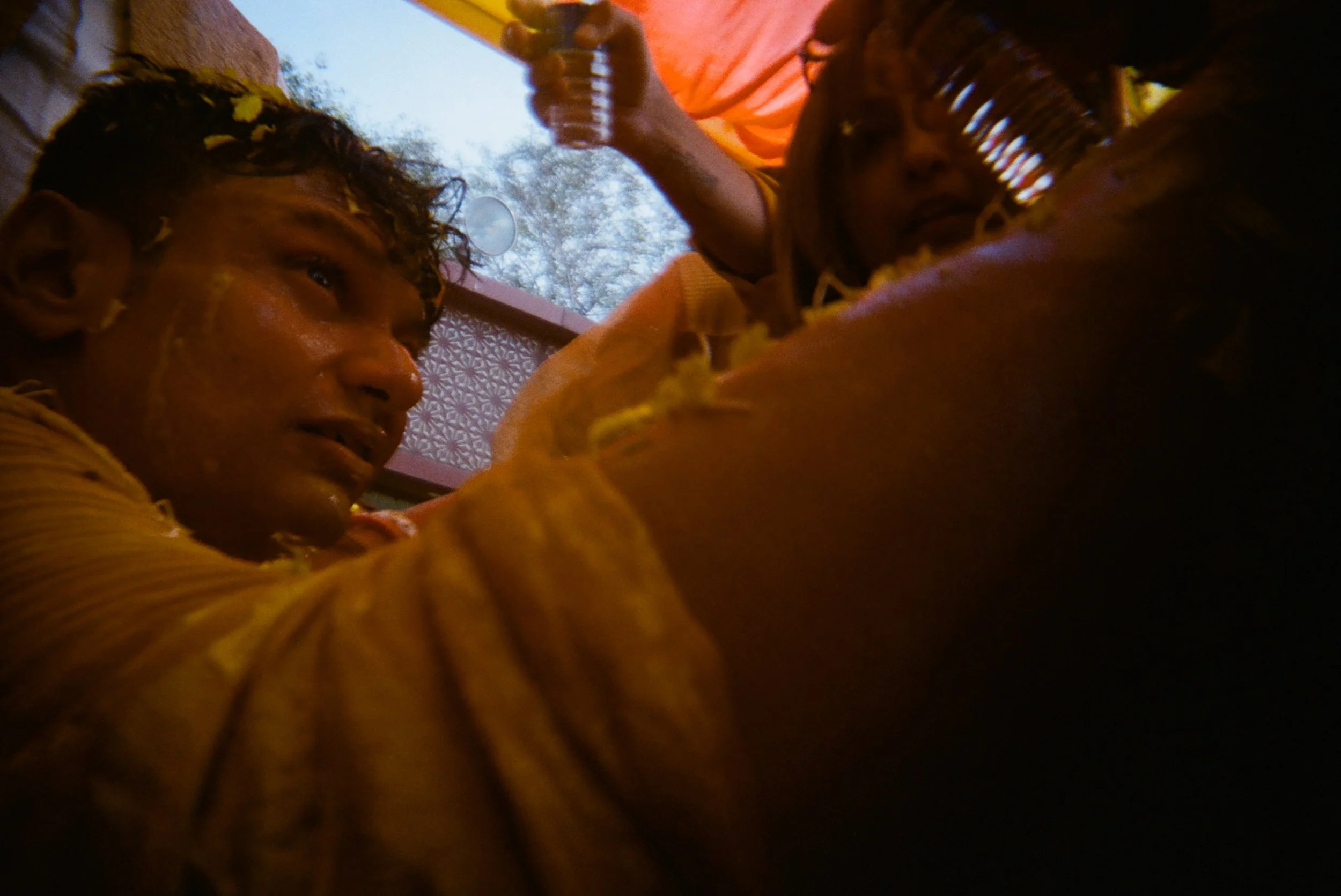

Haldi, a cherished ritual in the lead-up to the wedding, involves the application of turmeric on the bride and groom. She would have been filled with joy to witness her sister, in my mother's stead, embracing the maternal role with grace and dedication. It would have been a source of immense pride for her.

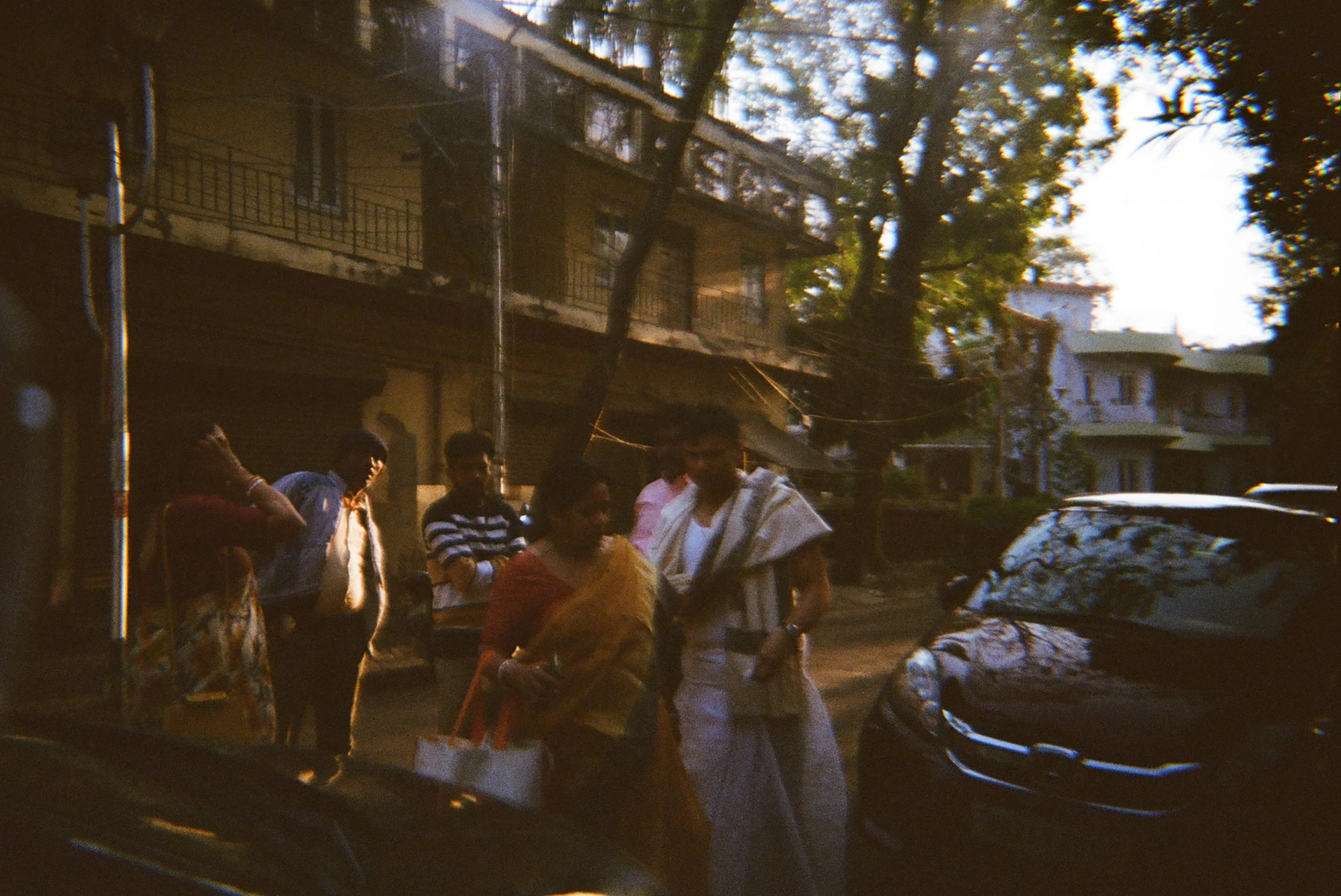
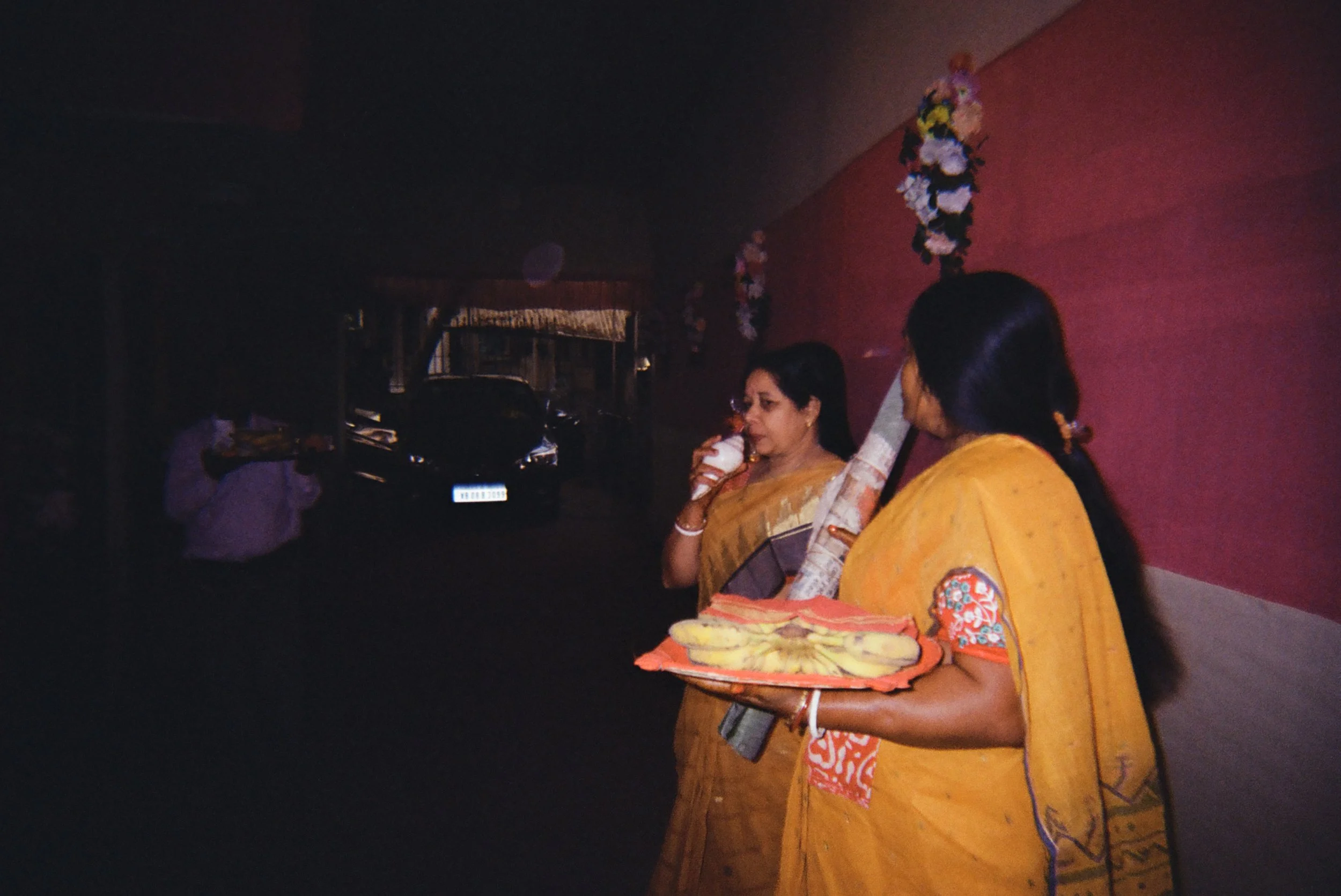

Nandimukh, a solemn ritual that readies the groom for the wedding nuptials.
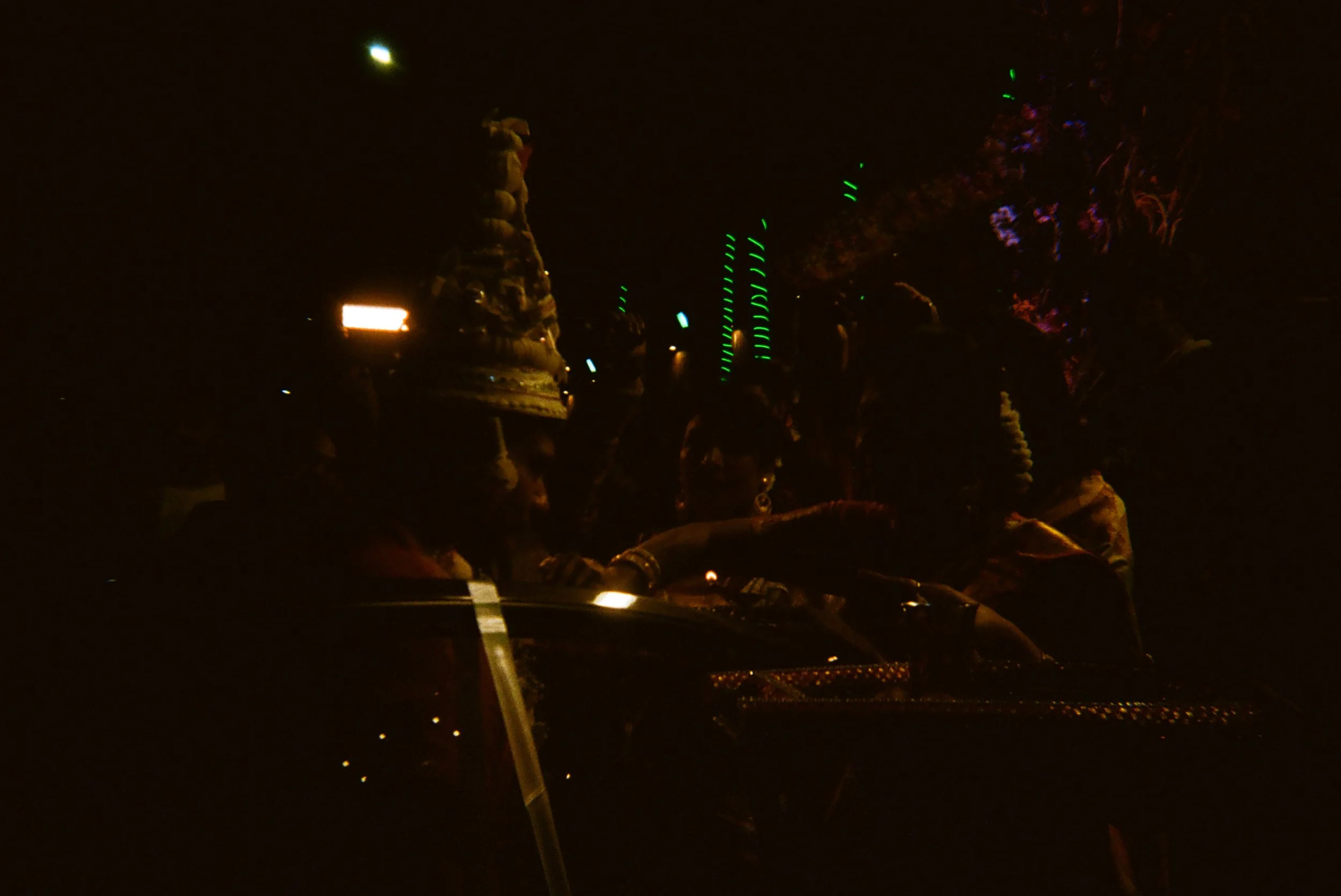
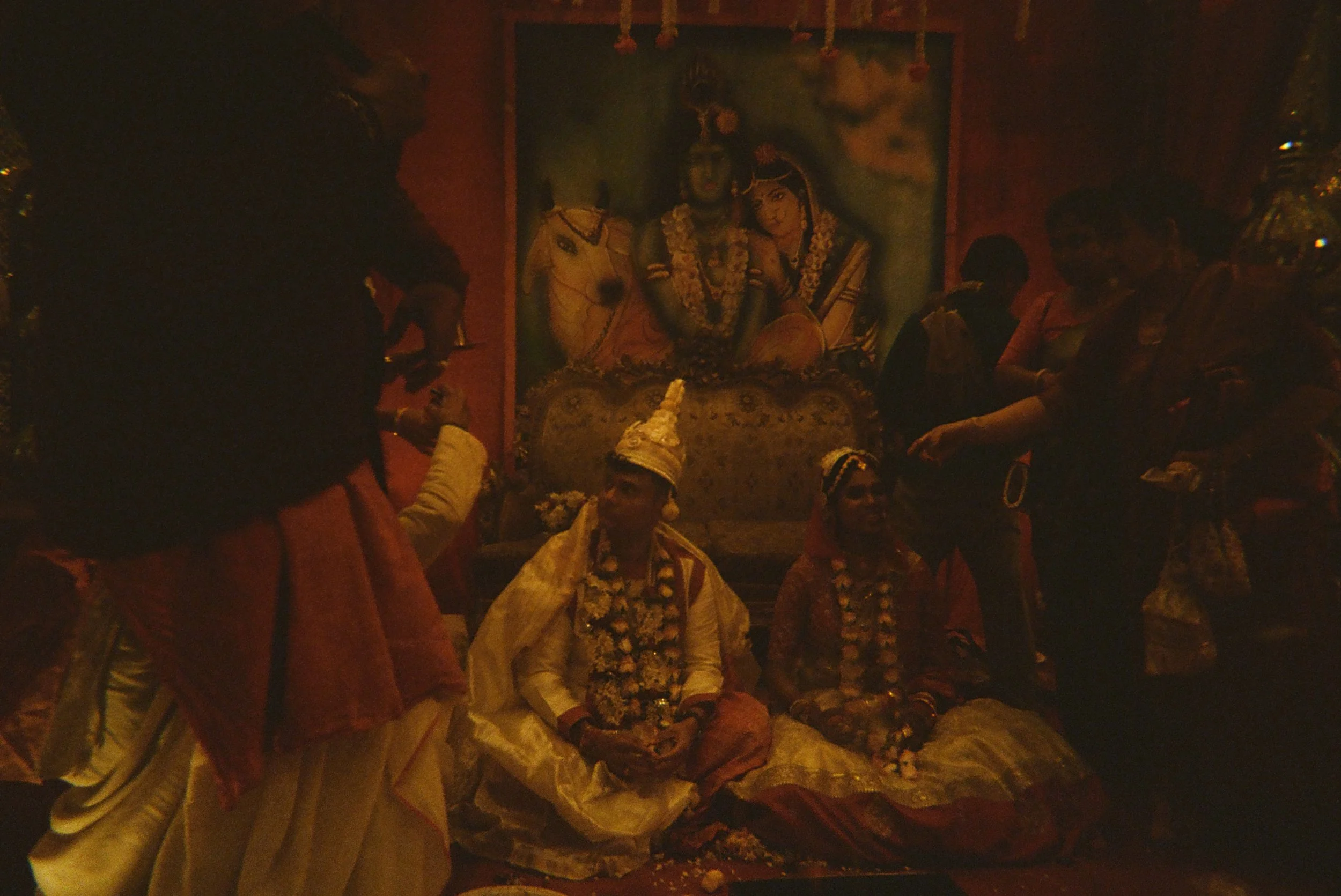

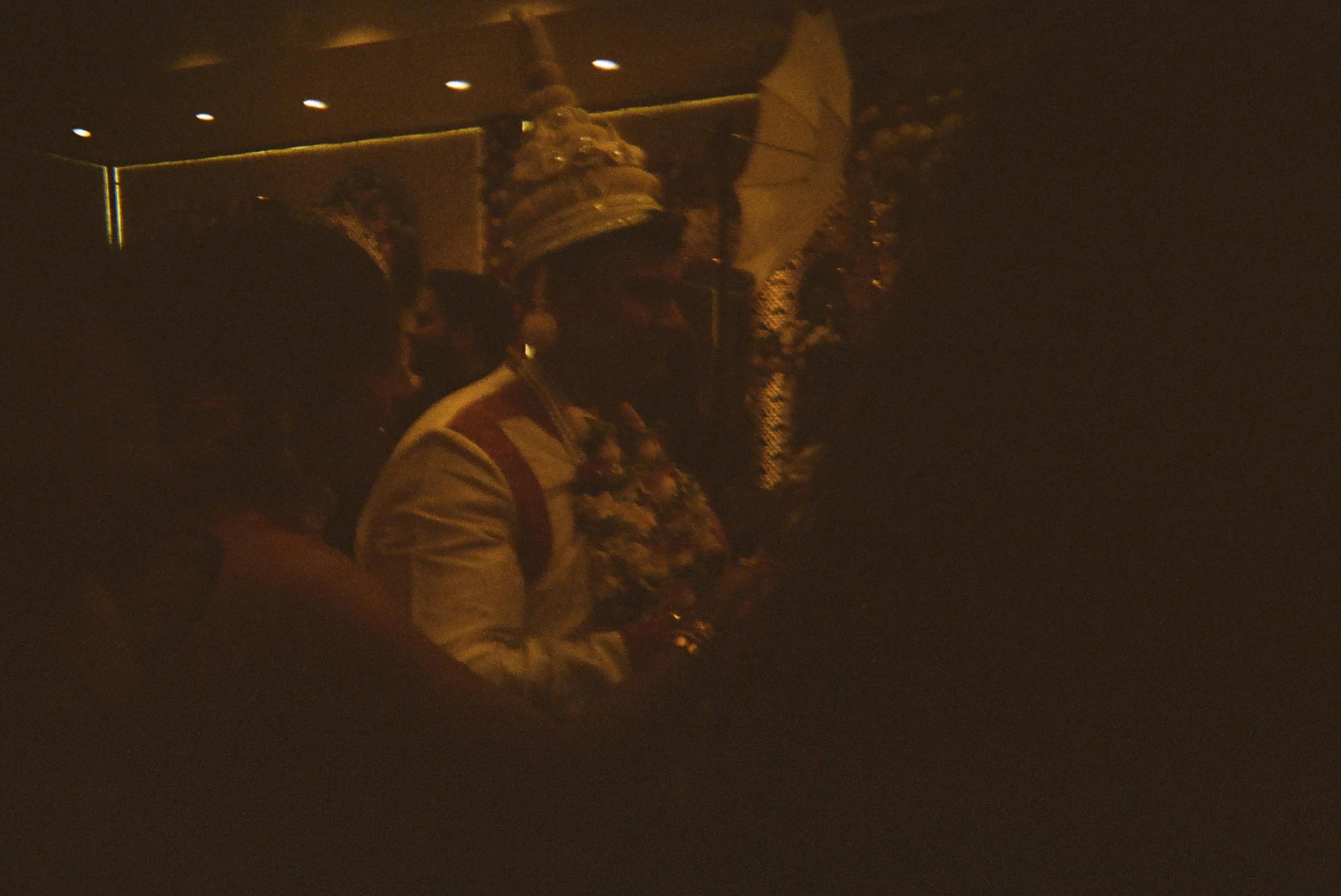

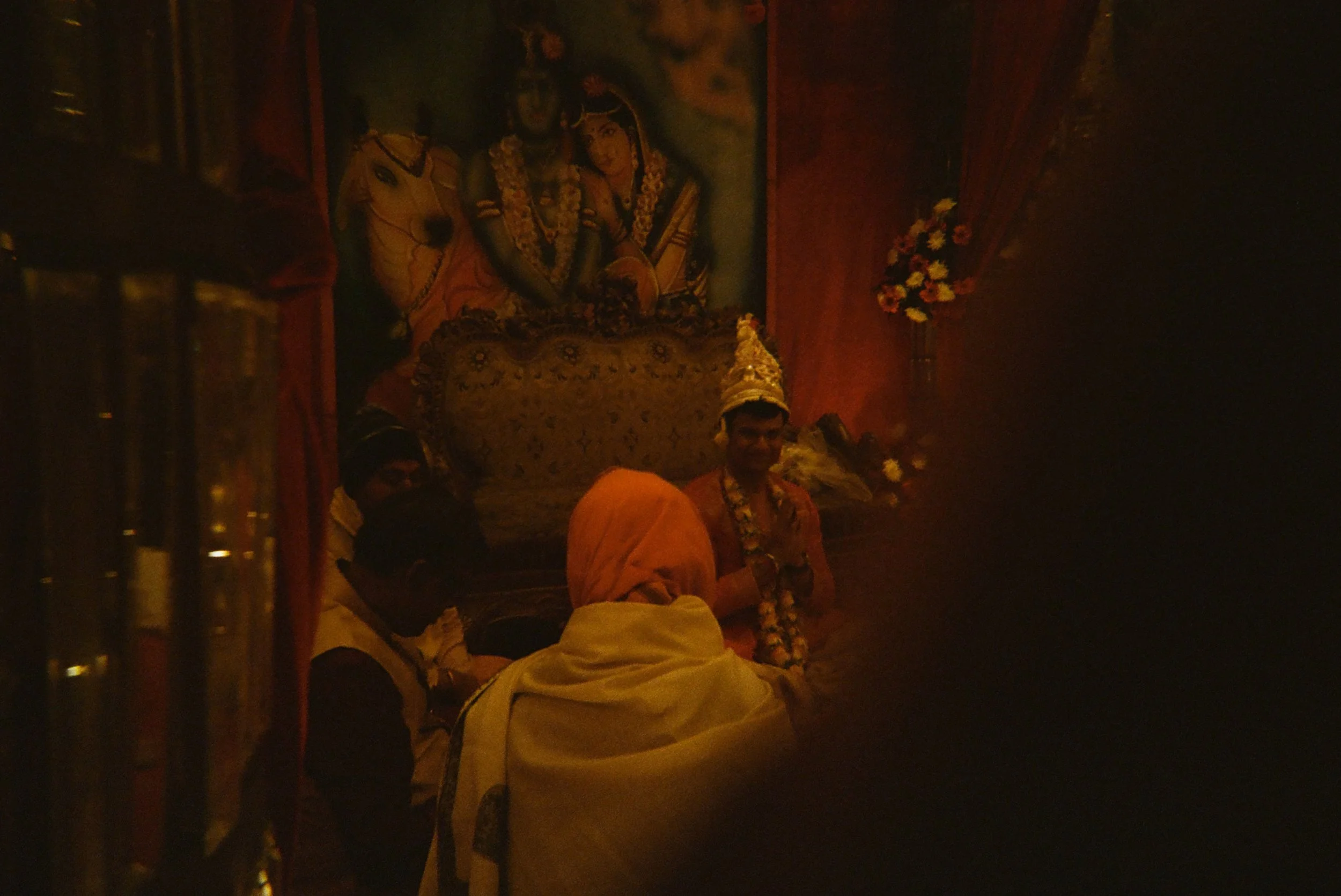
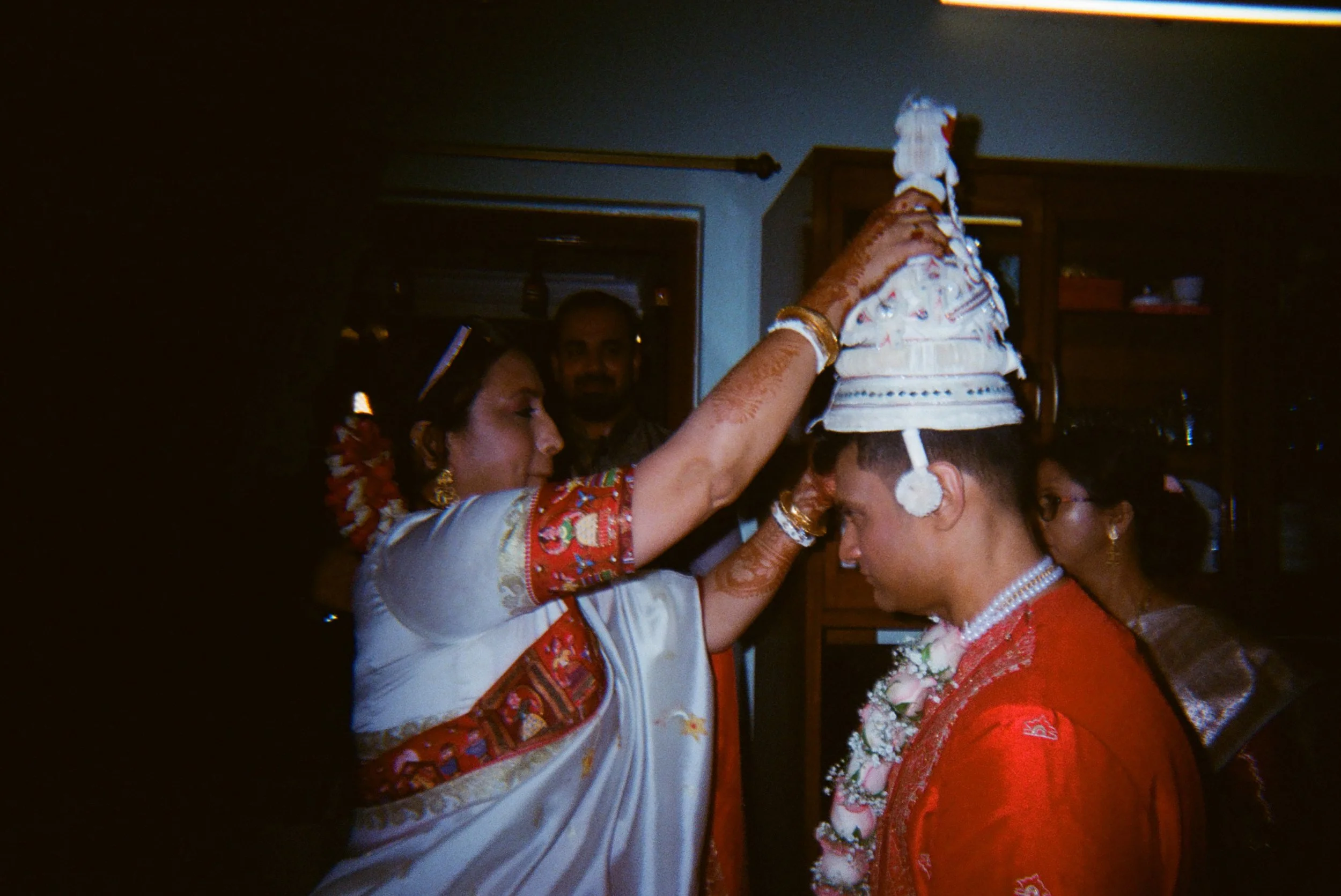
And so, we reached the heart of the ceremony, where my mother, standing in for herself and the absent, lovingly sent him forth to embrace his new life. This pivotal moment marked his final steps from the family home as a bachelor, embarking on a journey to return with his bride—someone my aunt would have embraced as another daughter. The poignant truth that my brother's wife never had the chance to meet her fills us with a blend of sorrow and reflection. Yet, we keep my aunt's spirit vibrantly alive through the stories and words we share, ensuring her presence is perpetually felt among us. It echoes the ancient Egyptian belief in immortality, where the pharaohs, though long passed, continue to live through the tales and honors we bestow upon them. In this way, my aunt, too, achieves a form of immortality, cherished and remembered within the hearts of those who loved her.
